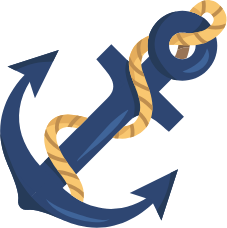What is the difference between crewing cruise ships and super yachts?
Cruise ships and super yachts are both large vessels that are staffed by crew members who make sure things are running smoothly.
Don't let that statement fool you, though—the experience of working on each vessel is quite different. In this article, we'll explore some key differences between working on a cruise ship and working on a super yacht.
Let's dive in!
Cruise Ships vs. Super Yachts: Specifications
The first thing to note is that cruise ships are generally much larger than super yachts. The average cruise ship is about 900 feet (ca. 274 meters) long, while the average super yacht is only about 150 feet (ca. 46 meters) long.
This difference in size means that there are also differences in the number of crew members. A typical cruise ship will have a crew of around 800 to 1,500 people, while a typical super yacht will have a crew of about 10 to 20 people.
Cruise Ships vs. Super Yachts: Work Hours
Another key difference between working on a cruise ship and working on a super yacht is the work hours. On a cruise ship, crew members typically work long hours—up to 10 hours per day—and will have they often have to work on weekends and holidays.
On a super yacht, crew members usually work around 8-10 hours per day, and they typically have more time off, dependant on the yacht’s itinerary. This difference is due in part to the fact that cruise ships carry more passengers and offer more amenities, including:
- casinos
- nightclubs
- restaurants
- shops
- live entertainment
On a super yacht, on the other hand, the focus is more on luxury and relaxation, so there can be fewer work hours.
Cruise Ships vs. Super Yachts: Work Environment
The work environment is another area where cruise ships and super yachts differ. On a cruise ship, the work environment is fast-paced. There are usually large numbers of passengers, and things do get busy.
On a super yacht, the work environment is typically more relaxed. There is often a higher crew to guest ratio, meaning there are more people to handle the workload. And the fact that there are fewer people in general makes for a quieter atmosphere.
That said, cruise ships typically offer their crew members dedicated crew areas for relaxation, while super yachts typically do not.
Cruise Ships vs. Super Yachts: Salaries
Finally, let's talk about salaries. Crew members on cruise ships typically earn less than crew members on super yachts.
This is due in part to the fact that super yacht owners are typically looking for crew members with exceptional maritime skills and experience. They are also willing to pay more for luxury and exclusivity.
Of course, salaries vary depending on the specific cruise ship or super yacht, so it's always best to do your research before applying for a job.
What Are the Requirements for Crew on a Cruise Ship or Super Yacht?
Now that we've gone over some key differences between working on a cruise ship and working on a super yacht, you might be wondering what requirements you need to meet in order to work on either one.
For the most part, there are very few formal requirements for entry level positions. You'll need:
- a valid passport
- a seafarers medical exam
- a STCW Basic Training certificate
- a firm grasp of the English language
However, these are the bare minimum requirements. If you're looking for a higher-level position, such as a management or officer mate position, you'll need additional experience and qualifications.
It's also important to note that most cruise lines and super yacht owners prefer to hire crew members who have experience working in customer service.
Finally, it's worth mentioning that many cruise lines and super yacht owners require their crew members to sign a contract. This contract can last for up to 6-8 months, and it can typically include a clause that requires you to pay back the cost of any training the company has paid, should you leave the job early.
How To Land a Job on a Cruise Ship or Super Yacht
1. Find Opportunities
If you're interested in working on a cruise ship or super yacht, the first thing you need to do is search online for job postings on our website.
2. Complete Your Application
Once you've found a job listing that interests you, the next step is to complete your application. Ensure that you have an up to date resume to submit as part of your application.
If there are any requirements that you don't meet (e.g., STCW Basic Training certification), you'll need to take care of those before you can complete this step. Luckily, there are plenty of maritime skills academies (such as the Maritime Skills Academy) that can help you get up to speed.
3. Interview and Training
After you've submitted your application, the next step is an interview.
For cruise ship jobs, this will likely be a video interview with a hiring manager - but every cruise line is different. For super yacht jobs, the interview process is less systematic.
You might have an in-person meeting with the captain or owner of the yacht, followed by a trial period where you'll work as a deckhand or stewardess to see if you're a good fit for the job.
Join a Crew Today!
If you're interested in working on a cruise ship or super yacht, now is the perfect time to start your job search!
Both industries are booming, and there are plenty of opportunities for motivated individuals with the right skills and qualifications. Just remember to do your research before applying for any job, and don't forget to complete your STCW Basic Training certification—it's one of the most important requirements for any maritime job.

